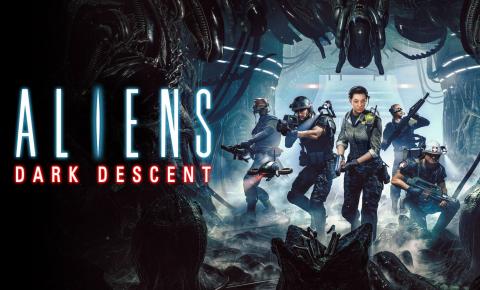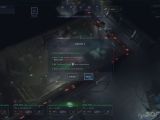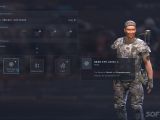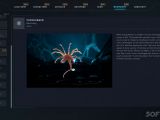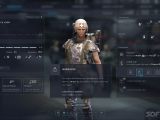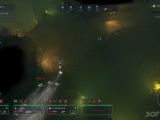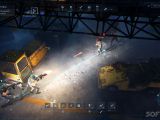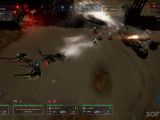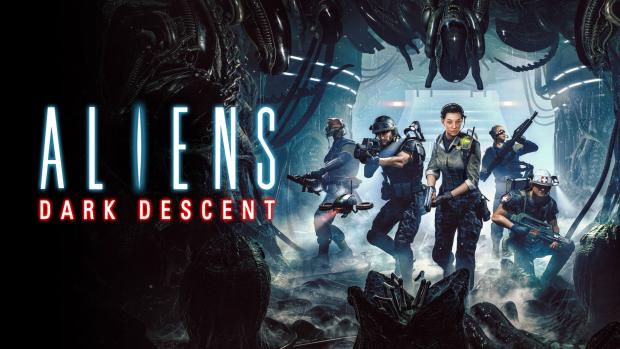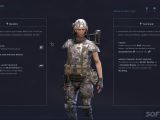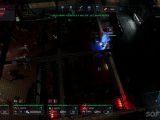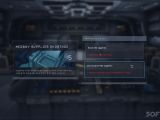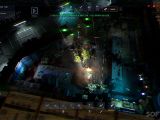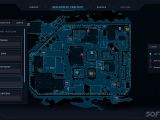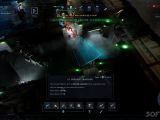The four-man squad is moving slowly through a corridor, weapons at the ready. Their incredibly important motion scanner is showing something moving through a corridor they’ve already cleared. It’s probably an alien on the prowl, ready to pounce as soon as he sees them. Moving into a room and waiting the creature out is one option but it’s impossible to delay a confrontation forever.
I access the tactical menu, slowing down the flow of time as I consider my options. There are two signals further away and they’ll come running as soon as the firefight starts. I lay down suppressing fire down their most likely path. It will slow them down and give my team time. I start backing up and the alien catches up. The corridor explodes with fire but the creature is fast. I go to the tactical menu again and use a shotgun blast to make sure I kill it before it can hurt anyone.
The squad is now stressed and low on ammo, with the aliens on the hunt. I have enough tools, so I weld a door and rest to keep them in the fight. This facility is big and there are plenty of spaces I have not explored. My first target is the camera control room, which will give me a better idea of what the Colonial Marines will have to deal with.
Aliens: Dark Descent is developed by Tindalos Interactive and published by Focus Entertainment. I played via Steam on the PC. The game is also offered on the PlayStation 5, the Xbox Series X and S, and older consoles from Microsoft and Sony. The title blends squad-based tactics, action, stealth, and resource management as players try to survive the xenomorph onslaught.
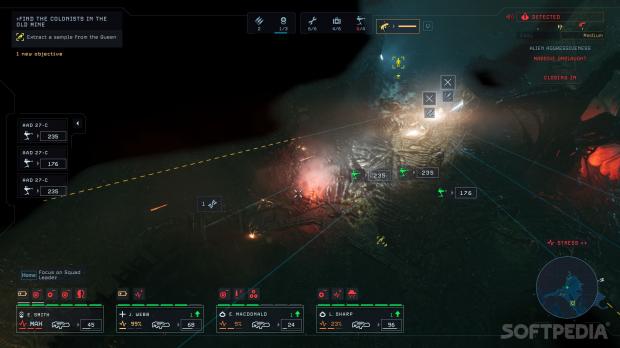
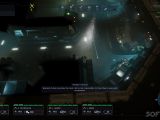
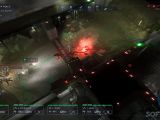
The game starts with players in control of Maeko Hayes, initially part of the administration of a Weyland-Yutani space station above a newly established colony. Things quickly go wrong for her, xenomorphs are released, and only the quick intervention from Colonial Marines from the Otago saves her from being devoured.
Our heroine activates something called the Cerberus System, a space-based quarantine solution, to stop the xenos from moving to other parts of space. Unfortunately, this also means the Otago crashlands on the Lethe. The aliens are already there and Hayes, working with Marine leader Jonas Harper, tries to save civilians while finding a way to repair the military spaceship and get a distress message out.
Hayes and Harper don’t go out on missions. The grunts do. Players control a squad of four Colonials who go out on missions and move and act as one. Choose to investigate a crate and the game decides who to send. Hack a terminal and the marine with the right trait is used. The group can rely on backup from their ARC and their drop ship.
Initially, infiltration is the name of the game in Aliens: Dark Descent. When the motion tracker beeps, take a look at the map and find a way to avoid a potential threat while investigating locations and pushing for objectives. But enemies, be they various types of xenos or hostile humans, cannot be avoided forever.
In combat, gamers can slow down time (a pause option is also available) by accessing the tactical menu. The Colonial Marines constantly generate points to use on powerful abilities: suppressing fire, powerful grenades, close-quarters weapons, flares, and more. Turrets can be deployed to augment firepower.
It’s not hard for the marines to deal with one alien. But detection means the entire hive goes on the hunt and that the xeno threat escalates in strength. A Praetorian is much harder to battle, especially if he arrives after a few of his friends have already softened up the squad. And every time the squad is detected, they get stressed.
Stress leads to negative status effects and those lead to trauma that will affect a marine in the long term. Sure, you can find a room, weld all doors using the group’s supply of tools, and order them to rest. But that’s a temporary reprieve from the horror of battling aliens. Medical kits pull dual duty, replenishing health while also eliminating stress.
Every mission in Aliens: Dark Descent is tense. I sometimes felt genuine fear when the motion tracker pinged after I used my last medkit to heal someone’s injury. Gamers have to constantly balance the need to achieve objectives without letting the aliens infest the planet with the effects that prolonged confrontations will have on their marines.
The Otago is the mobile base where gamers manage their troops. The laboratory will use alien DNA to deliver important upgrades, and a variety of weapons can be created in the workshop, while the med bay is crucial to treating both physical and mental wounds. Each Colonial Marine is assigned a class (gunners are the best) and gamers will pay resources to give them additional abilities and perks.
This is not a horror game. The player always has enough choices and tools to deal with danger. But the developers understand that Aliens is all about long-simmered tension followed by extreme moments of violence. Stress is a brilliant mechanic that forces players to gamble. Sometimes good tactics and solid command point use mean that a squad achieves its objective and only has to deal with mental scars. Sometimes only three people return to the Otago, one carried on a comrade’s shoulders.
Aliens: Dark Descent mostly captures the atmosphere of the first two movies, with grungy, dark installations and many gun metal textures. Players can adjust the level of zoom, the map is very helpful, and the interface makes managing the squad easy. There are moments, especially in the cutscenes when the level of detail is a little limited for the title’s ambitions. But I suspect not many players will complain about the detail on a mini-gun when they’re busy scanning corridors, dodging aliens, and planning how to get to a room that can be sealed.
The voice acting is mostly fine, although sometimes the character’s emotions are a bit over the top. The ping of the tracker is the most important sound in the entire game, with the rest of the sound effects adding to the tension. The soundtrack isn’t movie quality but comes close.
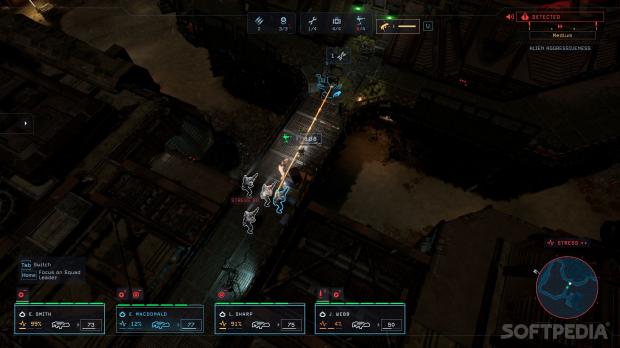
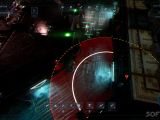
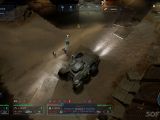
The Good
- Use of the Alien license
- Squad tactical combat
- Stress and its associated mechanics
The Bad
- A few contrived battle scenarios
- Some graphical glitches
- Needs more marine interactions
Conclusion
The stress mechanic means that even winning battles can have steep costs, forcing players to think of alternate ways of achieving objectives. Aliens: Dark Descent doesn’t redefine its genre but its mechanics are strong, the narrative has interesting beats, and few other tactics-focused titles use their fictional as effectively.
A review key was provided by the publisher
 14 DAY TRIAL //
14 DAY TRIAL // 